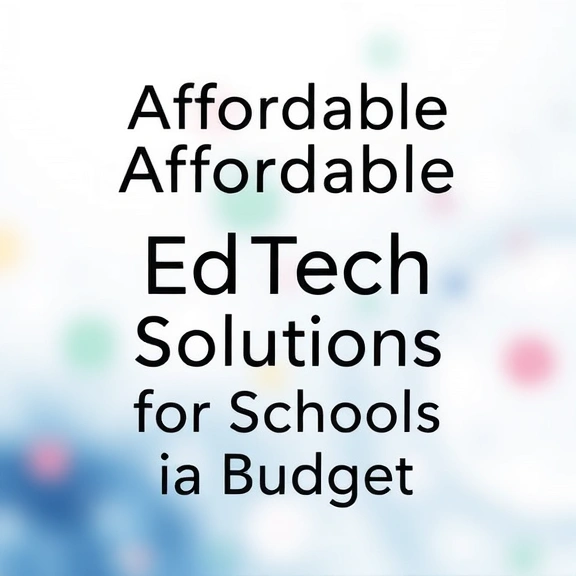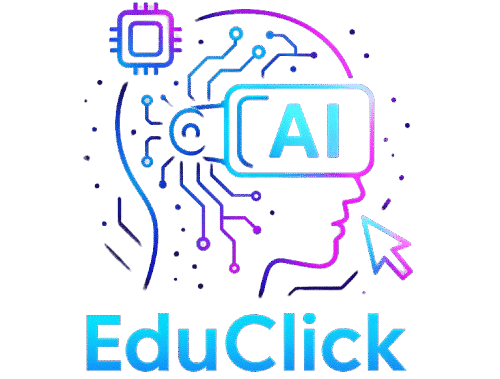The Future of Education: Affordable EdTech Solutions for Schools on a Budget
Imagine a classroom where every student has access to the world’s knowledge at their fingertips, where educators can personalize learning to meet individual needs, and where resource constraints are no longer a barrier to a quality education. You may have experienced the frustration of limited school budgets firsthand, whether as an educator, administrator, or parent. You know the heartbreak of seeing a student’s potential hindered by the lack of necessary tools and resources.

Yet, the landscape of education is shifting. Technology is not just a luxury; it is becoming an essential element in modern education. But how do you bring this reality into schools that are bound by tight financial constraints? The answer isn’t easy, but it is achievable through carefully selected affordable EdTech solutions. These solutions promise to revolutionize learning environments without overwhelming budgets.
Remember the excitement of your first laptop or tablet? The world of possibilities it opened? Now, think of giving that same sense of wonder to a child who has never held a digital device. It’s a powerful image, and it drives the quest to find budget-friendly educational technology that can bring that wonder into every classroom.
This article will guide you through the myriad of options available, providing practical advice and real-life examples. Whether you’re looking for remote learning strategies or innovative classroom tools, you’ll find insights that can help you transform your educational environment. Let’s delve deeper into how you can make the most of what technology has to offer, even on a tight budget.
Understanding Affordable EdTech: What It Means for Schools
Defining Budget-Friendly Educational Technology
Budget-friendly educational technology refers to tools and resources that provide value without incurring high costs. These can range from open-source software to discounted hardware for educational institutions. The goal is to maximize the educational impact while minimizing financial expenditure.
Why Affordable EdTech is Essential for Schools
In many schools, budgets are shrinking while the demand for technology grows. Affordable EdTech offers a lifeline, enabling institutions to keep up with technological advancements without financially debilitating themselves. By using such tools, schools can maintain a competitive edge and provide students with vital digital skills.
The Role of Government and NGOs in Supporting EdTech
Governments and non-governmental organizations play a crucial role in the proliferation of affordable EdTech. Many provide grants, subsidies, or partnerships with tech companies to ensure schools have access to necessary technology. Exploring these opportunities can significantly alleviate the financial burden on schools.
Implementing Cost-Effective Tools for Schools
Choosing the Right Hardware on a Budget
When selecting hardware, consider refurbished or donation programs. Many technology companies offer certified refurbished laptops and tablets that can serve your classrooms well. Additionally, bulk purchasing can lead to discounts.
Leveraging Open Source Software
Open source software is a powerful ally in the quest for affordable EdTech. Programs like Linux, Google Classroom, and Moodle offer robust educational platforms without licensing fees. Integrating these tools can save schools significant sums annually.
Utilizing Free Online Resources and Platforms
Platforms such as Khan Academy, Coursera, and Edmodo offer free or low-cost educational resources. These platforms not only offer content but also tools for tracking student progress, making them invaluable for teachers and students alike.
🎥 Vídeo complementar sobre o tópico
Innovative Remote Learning Strategies
Developing a Remote Learning Framework
To effectively implement remote learning, establish a comprehensive framework that includes clear communication channels, a standardized schedule, and guidelines for both students and teachers. This helps in providing a seamless learning experience.
Tools for Remote Collaboration
Utilizing platforms such as Zoom, Microsoft Teams, and Google Meet can enhance collaboration in a remote learning setup. These tools allow for interactive sessions, group work, and real-time feedback, making remote education more engaging and effective.
Adapting Content for Online Learning
Content adaptation is key. Transform traditional lessons into interactive digital formats using tools like Prezi, Canva, and other multimedia tools. This encourages student interaction and maintains engagement during remote lessons.
The Impact of Affordable EdTech on Student Outcomes
Enhancing Engagement and Motivation
Technology in the classroom can significantly boost student engagement. Tools that are interactive and multimedia-oriented cater to various learning styles, ensuring that every student can connect with the material in a meaningful way.
Addressing Diverse Learning Needs
EdTech offers personalized learning experiences, catering to the unique needs of each student. Programs that adapt to the learner’s pace can help bridge gaps in understanding, providing additional support for those who need it most.
Tracking Progress and Performance
With EdTech, tracking student progress becomes more straightforward. Many programs include analytics tools that provide insights into student performance, enabling educators to tailor their instruction to better meet individual needs.
Challenges and Solutions in Implementing EdTech
Overcoming Resistance to Change
Resistance to technology often stems from a lack of familiarity. To combat this, provide training sessions and resources for educators and stakeholders, showcasing the benefits and ease of use of new technologies.
Ensuring Digital Equity
Digital equity is a pressing issue. Ensure all students have access to the necessary tools by establishing check-out programs, community partnerships, and subsidized internet plans. This ensures no child is left behind due to economic disparities.
Managing Ongoing Costs and Maintenance
Consider the total cost of ownership, including maintenance and updates. Setting aside a budget for these ongoing expenses and leveraging community resources or partnerships can help manage these costs effectively.

Frequently Asked Questions
What are some affordable EdTech solutions for schools?
Affordable EdTech solutions include open-source software like Moodle for course management, Chromebooks as cost-effective hardware, and educational platforms like Khan Academy that offer free resources. These solutions help schools enhance learning without incurring high costs.
How can schools implement remote learning strategies effectively?
Effective remote learning strategies involve creating a clear framework, utilizing communication tools like Zoom for interaction, and adapting lesson content into engaging digital formats. Establishing these components ensures a structured and interactive remote learning experience.
What role does government funding play in EdTech?
Government funding can help schools access necessary technology by providing grants, subsidies, and partnerships with tech companies. This support is crucial in reducing financial constraints and ensuring all schools can benefit from EdTech advancements.
How can EdTech enhance student engagement?
EdTech enhances student engagement by incorporating interactive and multimedia elements into lessons. This approach caters to different learning styles and encourages active participation, making learning more dynamic and engaging for students.
What are the challenges of integrating EdTech in schools?
Challenges include resistance to change, ensuring digital equity, and managing ongoing costs. Providing training, establishing partnerships for resources, and planning for maintenance can help overcome these hurdles effectively.
Can open source software be reliable for educational purposes?
Yes, open source software is often reliable and widely used in education. Programs like Linux and Moodle offer stable platforms for learning management, supported by large communities that contribute to ongoing development and support.
What steps can schools take to ensure digital equity?
Schools can ensure digital equity by providing devices through lending programs, partnering with local businesses or organizations for resources, and advocating for affordable internet solutions for students from low-income families.
How can educators be trained to use EdTech effectively?
Educators can be trained through workshops, online courses, and peer mentorship programs. Providing ongoing professional development and creating a support network encourages confidence and proficiency in using EdTech tools.
Conclusion
As you journey through the challenges of integrating technology into education, remember that the ultimate goal is to enrich student learning and prepare them for a rapidly evolving world. Affordable EdTech solutions are not just a possibility; they are a necessity. By implementing these strategies, you can ensure that your students receive the education they deserve.
Embrace the change and advocate for the resources that will transform your classrooms. Encourage your peers and administrators to adopt these cost-effective tools, and don’t hesitate to explore the plethora of options available. The potential for creating engaging, inclusive, and technologically adept educational environments is within reach.
Your school might face hurdles, but with determination and the right resources, you can overcome them. Engage with community partners, seek out funding opportunities, and continually adapt to technological advancements. By doing so, you create a legacy of resilience and innovation in education.
Join us in reshaping the future of education. Share this article, start a conversation, and take action. Together, we can ensure that every student has the opportunity to succeed in a world where technology and education go hand in hand.
Key Takeaways
- Affordable EdTech solutions can transform learning environments without overwhelming school budgets.
- Open-source software and refurbished hardware are cost-effective options for implementing technology in schools.
- Remote learning strategies must include a structured framework and engaging content to be effective.
- Technology enhances student engagement, caters to diverse learning needs, and allows for better tracking of student progress.
- Challenges such as resistance to change and digital equity can be addressed with proper planning and resources.




